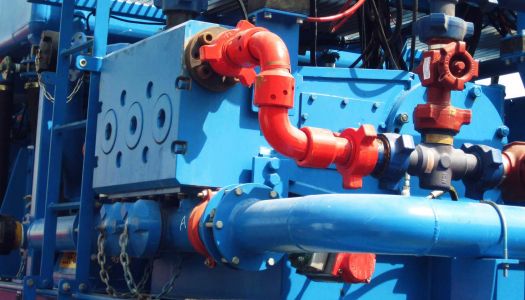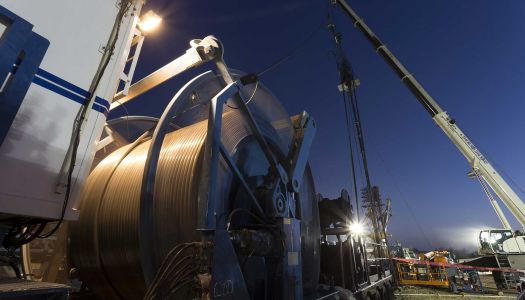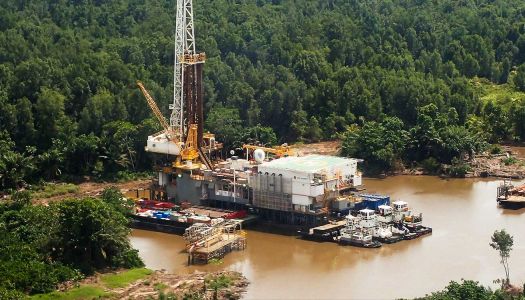The cementing operation itself is performed by a cementing unit that includes all the equipment and materials required to emplace the cement:
Cementing baskets
This equipment is generally used to minimize losses of cement slurry in weak zones. The baskets are used only in shallow to medium depths, since they act in a purely mechanical way. They do not prevent pressure transmission but do curb fluid passage considerably. There are two types:
the conventional model in the shape of an umbrella which is not recommended for the uncased part of the hole,
the centralizer-basket in a one-piece apparatus, with a receptacle protected by an outside centralizer, that can be used in the uncased part of the hole as well as to move the casing during cementing.
- one or more tanks to ensure an extra supply of water is on hand for mixing,
- one or more centrifugal pumps to supply the tanks, mix the fluids and boost the high-pressure pumps,
- a mixing apparatus for the cement,
- one or two high-pressure pumps,
- Monitoring and measurement equipment.
Cementing baskets
This equipment is generally used to minimize losses of cement slurry in weak zones. The baskets are used only in shallow to medium depths, since they act in a purely mechanical way. They do not prevent pressure transmission but do curb fluid passage considerably. There are two types:
conventional model
centralizer-basket
Cementing heads
A cementing head is screwed onto the top of the casing and holds the two cementing plugs. It allows the drilling mud to circulate, the cement slurry to be pumped in after the bottom plug has been released and the top plug to be pumped down with more drilling mud.
Cementing plug
The plugs are mainly designed to separate the different fluids (mud, intermediate fluid, slurry) physically while they are being pumped through the casing. The plugs keep the fluids from mixing for as long as possible and lessen contamination risks. There are two types of plugs:
The bottom plug
The top plug
Specific equipment for two-stage cementing
Primary cementing equipment is standard, but for second-stage cementing, a stage float collar or DV (diverter valve) must also be incorporated in the string. The DV serves as a bypass between the inside of the casing and the annulus so that the cement can be circulated and flushed through the annulus at the selected depth.
When primary cementing has been completed, the DV is opened by pressure applied on the bomb that plugs off the lower sleeve. The second stage can then be cemented. Then a closing plug is released to move the upper sleeve downward at the end of the flushing phase that closes the ports.
Liner cementing equipment
Liners are equipped the same as for primary cementing with a subsea wellhead, but they are hung in the preceding string by what is called a liner hanger. There are two types of liner hangers:





